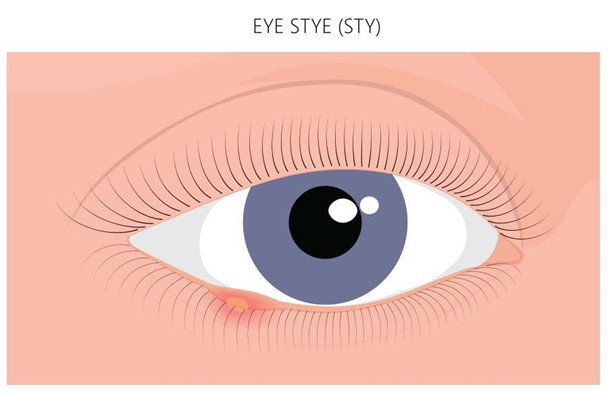A client diagnosed with a sty of the eye asks what can be done for treatment. Which of the following options will the nurse provide to the client?
An antifungal cream will be prescribed
Apply warm compresses several times a day
Use ice and cold compresses 3 times a day
You will need to have the other eye tested for vision loss
The Correct Answer is B
Choice A Reason: An antifungal cream is not indicated for a sty, which is an infection of the eyelash follicle or sebaceous gland caused by bacteria.
Choice B Reason: This is the correct answer because warm compresses can help relieve pain and inflammation, and promote drainage of the sty.
Choice C Reason: Ice and cold compresses are not recommended for a sty, as they can constrict blood vessels and delay healing.
Choice D Reason: There is no need to test the other eye for vision loss, as a sty does not affect vision unless it is very large or obstructs the pupil.

Nursing Test Bank
Naxlex Comprehensive Predictor Exams
Related Questions
Correct Answer is C
Explanation
Choice A Reason: Inserting a nasal swab to observe the fluid is contraindicated, as it can introduce infection or increase intracranial pressure. The fluid can be tested for glucose or halo sign to confirm cerebrospinal fluid (CSF) leakage.
Choice B Reason: Suctioning the nose gently with a bulb syringe is also contraindicated, as it can create negative pressure and increase CSF leakage or cause meningitis.
Choice C Reason: This is the correct answer because allowing the drainage to drip onto a sterile gauze pad can prevent contamination and facilitate observation of the amount and characteristics of the fluid.
Choice D Reason: Inserting sterile packing into the nares is not recommended, as it can obstruct the drainage and increase intracranial pressure or infection risk.
Correct Answer is C
Explanation
Choice A Reason: Obtaining the client's blood glucose every 12 hr is not enough, as the nurse should monitor it more frequently, at least every 4 to 6 hr, to prevent hyperglycemia or hypoglycemia. TPN is a high-glucose solution that can affect the blood sugar levels.
Choice B Reason: Changing the IV site dressing every 4 days is not enough, as the nurse should change it daily or as needed to prevent infection. TPN is a high-risk solution that can introduce microorganisms into the bloodstream.
Choice C Reason: This is the correct choice. Changing the IV tubing every 24 hr is recommended to prevent infection and maintain sterility. TPN is a complex solution that can support bacterial growth and contamination.
Choice D Reason: Weighing the client every other day is not enough, as the nurse should weigh the client daily to evaluate fluid balance and nutritional status. TPN can cause fluid retention or depletion, as well as weight gain or loss.

Whether you are a student looking to ace your exams or a practicing nurse seeking to enhance your expertise , our nursing education contents will empower you with the confidence and competence to make a difference in the lives of patients and become a respected leader in the healthcare field.
Visit Naxlex, invest in your future and unlock endless possibilities with our unparalleled nursing education contents today
Report Wrong Answer on the Current Question
Do you disagree with the answer? If yes, what is your expected answer? Explain.
Kindly be descriptive with the issue you are facing.
